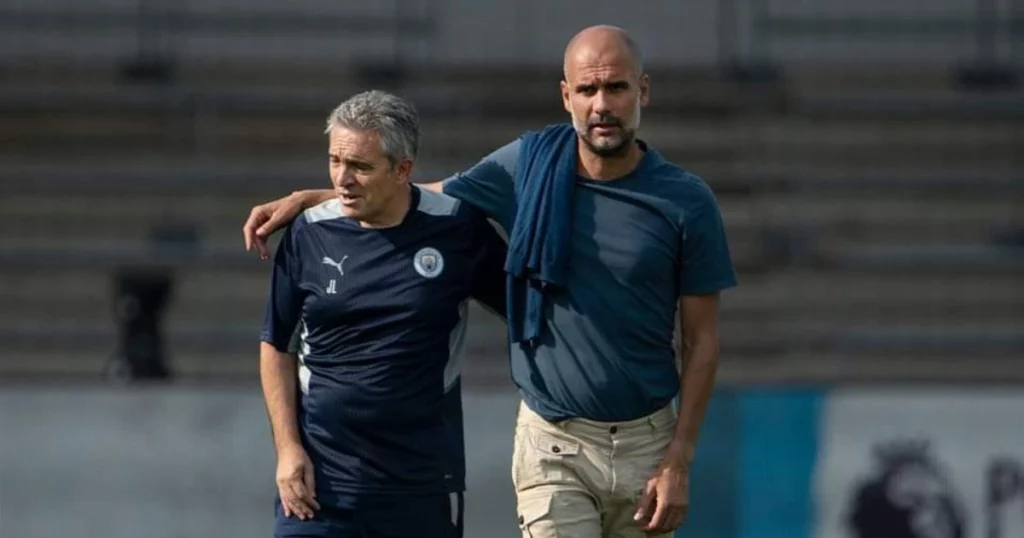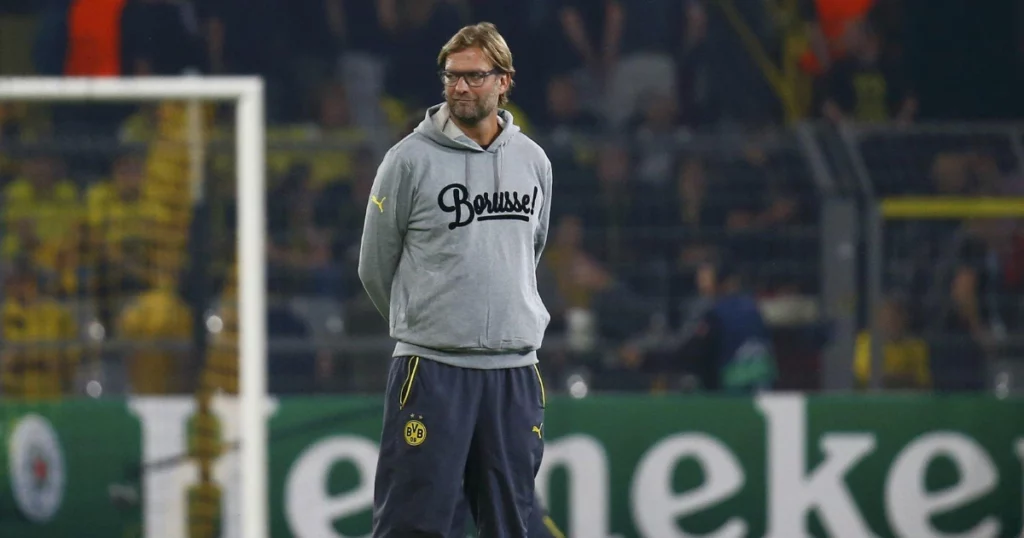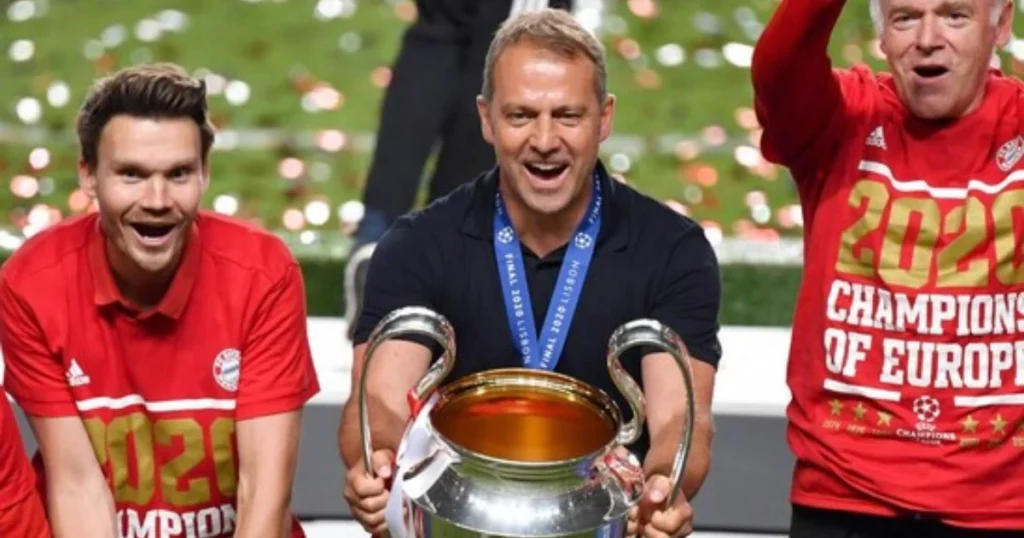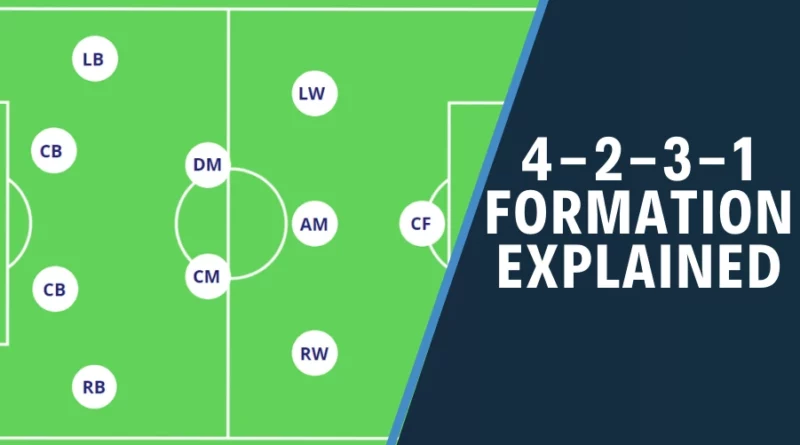Understanding the Fundamentals of 4-2-3-1 Formation: Football Tactics Explained
Football tactics often play a key role in winning games. The managers keep working on the touchlines on how to tweak things on the pitch to get results. More often than not, formations directly influence tactics on the pitch. One such formation that has been making waves for many years is the 4 2 3 1 formation.
The formation might seem quite basic, but it is quite attacking in nature. The 4-2-3-1 formation provides a central attacking threat and also protects the defence well. However, like any other attacking formation, it needs a certain level of skill from the players to pull it off. Players who know each other’s game and have wonderful chemistry can blow teams out of the water with this formation.
At Sportsdunia, we have taken the responsibility of breaking down all the elements of the game for you. Having already seen the evolution of football formations and the best formations in the world, today, we will do a deep dive into the 4231 formation.
What Is 4-2-3-1 Formation in Modern Football?
The 4 2 3 1 formation in modern football is one of the most used tactics by top teams. The formation that operates in four lines has four defenders in the first line. They are screened by two defensive midfielders playing in a pivot in the second line. In front of them in the next line are three midfielders who operate in a straight line, spread from right to left. A lone striker sits on top of the tree, leading the pack.
The formation has become a favourite for top coaches since it offers multiple attacking outlets and a stable defensive core.
4-2-3-1 Formation: Its Origin and Evolution Over Time

4 2 3 1 formation is often described as the cousin of 4 3 3 formation. 4 4 2 formation was the only recognisable formation all over the world in the late 1900s. A few coaches started playing around with the idea of dropping a striker for better protection and chance creation in the middle of the pitch.
One such coach who created the revolution of the 4 2 3 1 formation in the football world was Juan Manuel ‘Juanma’ Lillo. The current Manchester City assistant coach, Junama, was in charge of Cultural Leones in the Segunda B division in Spain. He tweaked 4 4 2 by introducing a playmaker instead of the striker. This allowed the wingers to invert into the midfield and attack with more vigour. Another major advantage of this formation is a high press that allows players to hunt the opposition.
With the midfielders providing the attacking threat, the central midfielders dropped deeper, becoming a defensive pivot. The backline pretty much remained the same. In Juanma’s words, “ My intention was to pressure and to try to steal the ball high up the pitch. It was the most symmetrical way I could find of playing with four forwards. One of the great advantages is that having the forwards high allows you to play the midfield high and the defence high, so everybody benefits. But you have to have the right players. They have to be very, very mobile, and they have to be able to play when they get the ball. You have to remember that they’re pressuring to play, not playing to pressure”.
The formation became an instant hit in the Iberian Peninsula and started spreading to the rest of Europe as well. The creation of a defensive pivot led to a new generation of players learning the defensive midfielder role and going on to become legends. Players loved the idea of screening the defence and not having much to do with the attack. However, those handfuls who managed to do a shift between the two-thirds went on to build world-class careers.
Also Read: What Is a False 9 in Football
Player’s Roles Breakdown in 4-2-3-1 Formation
Let us break down the roles of all the archetypes on the field in attack and defence in the 4-2-3-1 formation.
Full-backs
Attack
The full-backs play a crucial role in the success of this formation offensively. They have to bomb up and down the flanks to provide the team great width. If the midfielders play narrowly, the fullbacks have a chance to stretch the pitch and completely outnumber the opposition in the final third.
Defence
The standard defensive duty of the full-back is to take on their winger. They must be proficient in tackling and reading the game, knowing when to charge up the pitch and when to stay back. Recently, a fullback started tucking in to make back threes when a team is in possession, allowing the other one to join the attack.
Centre-backs
Attack
The centre-backs of the modern day are becoming more and more proficient passers of the ball. They will have a lot of time on the ball to pick excellent and piercing long balls that can break down oppositions so swiftly.
Defence
Defensively, life becomes easier for the centre-backs as they have a defensive pivot sitting in front of them, screening them. However, with the demands of playing an aggressive high line, they must be comfortable in tracking back and winning their duels.
Defensive Pivot
Attack
Usually, there is no greater attacking pressure on the double sixes in this formation. They are more defensive in nature, however, they can provide great value to their team if they can receive the ball from the back line and progress it forward either by line-breaking passes or skilful dribbles. Having great shooting from outside the box will be an added asset as they get plenty of opportunities to have a go at the goal.
Defence
They are the heart of the team. Usually, their presence allows the team to be so fluent in attack. One of the sixes sits alongside the centre back offering a helping hand in defence. The other often steps up the field to catch the opposition off guard and force turnovers. However, in possession-based sides, they step up incredibly high and lay siege to the opposition’s box.
The pivot plays a key role in winning the ball back quickly and recycling it to the forwards.
Wingers/ Wide Midfielders
Attack
The emergence of this formation has led to the creation of wrong-footed wingers. Wide midfielders used to play on the flank of their strong foot. With 4231 formation, they no longer needed to maintain the width as full-backs were joining them in the attack. This allowed them to cut in and shoot, creating the need for left-footed players on the right wing and right-footed players on the left wing.
However, when the help doesn’t come from the fullbacks in crucial moments, the wingers must be able to dribble or go outside and use their other foot to create trouble.
Defence
The beauty of this formation comes from this line as the wingers are instructed to press the opposition if they lose the ball. This freedom comes from the fact that the defence is well protected. They can occupy the opposition fullbacks and cut off the passing lanes, forcing an instant turnover.
Attacking Midfielder/ The Ten
Attack
The number 10 is the ace in this formation as they single-handedly determine how well their teams perform offensively. They have positional freedom like no other on the pitch. They can play behind the striker, trying to playmake or play alongside the striker and make threatening runs. Very often, you can even find them on the wing as well, trying to force the opposition defence out of shape.
The number 10s are expected to have a very high degree of passing. The onus of chance creation is on their shoulder. They should have all the tools required in the playbook to unlock defences.
Defence
The attacking midfielder becomes a crucial pressing trigger as soon as the attacking team loses the ball. They tend to press very high. However, when their side is without the ball for long periods, don’t expect much from them. The number 10s are not known for tracking back and winning the ball, as they happily leave that responsibility to the pivot.
Striker
Attack
Having a good striker makes a world of difference to the 4-2-3-1 formation. The striker who can trap the passes from the middle and bring the others into play can win matches on their own. The strikers often interchange with the number 10 to confuse the opposition and create openings. They must be strong in the air and efficient with their finishing in the box.
Defence
As quoted by Jurgen Klopp, the strikers are the first line of defence for any team. They are the leaders of the press to win the ball back from. The press must be well-orchestrated to have positive results, and that often depends on the striker.
4-5-1 Formation Compared With 4-2-3-1 Formation in Football
A 4 5 1 formation also employs five midfielders, similar to a 4 2 3 1 formation. But there is a lot of difference in the uses of these. A 4-5-1 formation has the same principles of defence and striker, but it differs in midfield.
There is a bank of five midfielders who often play in a straight line. The width is supplied by conventional widemen and the middle is protected by three central midfielders who stay rooted. It is used to close out games when the opposition threatens to overrun the middle of the pitch. Offensively, it becomes very hard to create.
However, this formation can easily be converted to a 4-2-3-1 formation by shifting personnel. A playmaker can be added to the middle, giving them the freedom to join the attack. The fullbacks can start pushing forward by asking a pair of midfielders to sit back.
Great managers have backup plans to counter opposition in-game. Switching between these formations is one of the most commonly found backup plans.
Also Read: What Is an Inverted Fullback?
Real World Positive Impact of Using 4-2-3-1 Formation in the Game
One of the main positives of using a 4-2-3-1 formation is the central threat it carries. A proficient double pivot allows them to strangle the opposition and create central overloads. The wingers can invert along with the striker and the 10 who crash the box. This not only gives offensive strength but also provides defensive cover. The pivot can screen the defence well. Also, the presence of a 4 line structure covers the gaps between the lines well.
Another main advantage of this formation is the number of passing options it provides in the buildup. A well-coached 4 2 3 1 formation always provides passing angles in triangles to players. Fluid passing around the opposition can allow teams to build out from the back very quickly.
Drawbacks of the 4-2-3-1 formation
One of the main drawbacks of the 4 2 3 1 formation is the need for highly skilled players in every position. The players must be proficient with the ball and must possess good game intelligence off the ball to perform at a high level. Also, since there is only a single striker, if they can be isolated successfully, the offensive threat is nullified by more than half. It doubles the burden on the number 10 and the wingers to create good chances.
If the number 10 fails to track back and aid their defence, teams with more conventional formations like 4 4 2 can outnumber the pivot in the middle of the park. Hence, every player has to be on top of their game to make this formation work.
Famous Teams and Managers Who Successfully Implemented the 4-2-3-1 Football Formation
Jurgen Klopp’s Borrusia Dortmund

Bayern Munich had the Bundesliga in a chokehold till Jurgen Klopp rocked up with his 4 2 3 1 formation. He built his core with hard-working youngsters and built a system that punched above its weight. It was in fact his tactics and sensational campaigns from his players that helped them win two back-to-back titles in the league.
Klopp’s team lined up in a 4-2-3-1 formation, which turned into a 2-2-6 on the field. The wide players tucked in and played alongside the strikers. The full-backs joined the attack, leaving the centre-backs and the pivot to fight for themselves. Robert Lewandowski’s incredible exploits fired Klopp’s side forward. His players like Mario Gotze, Marco Reus and Jakub Blaszykowski used to have intense games full of running to help their side.
His side combined this formation with gegenpressing, which made them a fun team to watch. They also won titles, showing how a good team with tactics can become a legendary one.
Hansi Flick’s Bayern Munich

When Hansi Flick took over Bayern Munich midway through the 19/20 season, not many gave him a chance. But the current Barcelona coach stuck to basics and made Bayern Munich an unplayable side. They were full of goals and destroyed the opposition in the UEFA Champions League during the single-legged knockouts.
Robert Lewandowski was the master in the box yet again and was paired with Thomas Muller, who made darting runs beyond him at times. Serge Gnabry, Kingsley Coman and Ivan Perisic posed a dangerous threat while inverting. However, it was the midfield pivot that took everyone’s breath away. Thiago Alcantara ran rings around the opposition with his elegant passing and dribbling, knowing he was well protected by another six alongside him. The presence of the pivot in turn allowed the fullbacks Alphonso Davies and Benjamin Pavard, or Joshua Kimmich to rain fire on the opposition.
Didier Deschamps’ France

International tournaments are often decided by excellent player performances, they say. It might be true, but France’s 2018 World Cup campaign proves to some extent that a strong tactical setup only allows great individual performances. Nothing can justify this fact more than France winning the World Cup with their striker, Olivier Giroud, scoring no goals.
Giroud was the orchestrator for his side as Antoine Griezmann called the shots from behind. Teen sensation Kylian Mbappe did the damage with his explosive goals as Paul Pogba and N’golo Kante wiped the floor with the opposition. Lucas Hernandez and Benjamin Pavard joined the attack and even had a greater role in defence.
Also Read: What Is a Low Block in Football
FAQs
Who is the most important player in the 4 2 3 1 formation?
The attacking midfielder or the number 10 is the most important player in the 4 2 3 1 formation.
Which teams still use the 4 2 3 1 formation?
Arne Slot’s Liverpool and Hansi Flick’s Barcelona still use 4 2 3 1 successfully.
What is the main advantage of the 4 2 3 1 formation?
A good 4 2 3 1 formation provides an excellent chance of creating centrally.
What is the main disadvantage of the 4 2 3 1 formation?
4 2 3 1 formation’s main disadvantage is the presence of only a single striker who could be isolated by a good defence.
What is the double pivot in the 4 2 3 1 formation?
A double pivot refers to the pair of defensive midfielders who sit in front of the defence and screen them.
